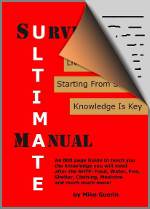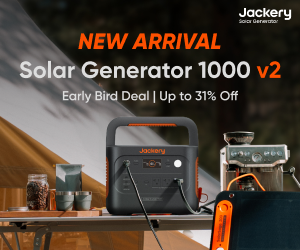SURVIVAL PLANNING AND SURVIVAL KITS

Preparation and gathering materials is just as important knowledge. This gathering of material and knowledge will vary from individual to individual and the steps do not need to be completed in any particular order. But it just makes sense that some items should be put ahead of others in priority. Just like in a survival situation the three essentials foods, water, shelter) are attacked in order of need/threat. Preparing for "the end" you want to solve your likely immediate survival needs first.
So the logical first place to start is either gathering knowledge or assembling what has become popularly known as a bug out bag.
A bug out bag is a bag or backpack that has the essential items you will need to sustain you for about three days should things go bad quickly, even instantaneously. These items are relatively cheap and can be quickly put together ahead of time for emergencies. So let's look at assembling a bug out bag.
One size does not fit all. Make sure your bug out bag is built to fit your needs. Some people will need items that are not on this list.
First item to include is maps. These maps should be laminated to make them waterproof or at a minimum they should be sealed in a waterproof container.
Second item is a first aid kit. The bigger the better in terms of medical benefit but you must take into consideration size and weight.
Next item is water. Water bottles you get at the grocery store will suffice for the water but that is not what you want in your bug out bag. You want a stainless steel water container, stainless steel, not plastic because you will need the ability to boil water in it. Old GI canteens or more modern stainless steel water bottles are available.
Clothing! Extra Socks, gloves, rain suit, poncho, jacket, hat, bandannas, and clothing for your environment. Don't leave out the poncho because you have a rain suit. The poncho can be used for other purposes such as a temporary shelter.
Knives! At a minimum a strong sturdy fixed blade knife and a Swiss Army knife or equivalent.
Small hatchet. A compact folding spade would also be a great addition.
Flashlight or flashlights. One of which should be the self powered model that never needs batteries.
A self-powered radio! Solar is available but the crank models are much better.
A couple of lighters for starting fires! A strike too also because this will provide long term fire starting capability.
Leatherman multi-tool!
String! Often overlooked but string is a huge asset that can save your life. A spool of trotline string is one option.
Rope! 550 paracord is a great choice.
Cash! Extra cash is very light and is useful in an emergency and if worst comes to worst you can use it as tender for fire starting, which is another item people put in bug out bags. I have left that off because some sections of your survival manual will not fit your situation and you can use those pages as tender.
Gun! A gun is important in many survival situations. A 22 caliber rifle such as the 10/22 is inexpensive and you can carry lots of ammo. The ammo is cheap as well. 22 ammo is so much more compact and much less expensive than centerfire ammo. You aren't going to easily carry 500 rounds of 30-06 ammo but you can carry that much 22 ammo.
Water! The heaviest item you will carry. A liter per day per person. How much you carry will depend on your access to water later. So have 3 liters ready to go! You don't have to bring the water if you choose at the time of the emergency.
Water purifying tablets or filter!
Extra medicine, do you have a medical condition?
Navigation equipment! A compass at a minimum, adding a GPS is better but do not substitute the GPS in place of the compass.
Fishing line and hooks!
Food! Energy bars, peanut butter, MRE's.
Sleeping bag, tent, tarp!
Rechargeable AA batteries, and a solar recharger.
Whistles! For everyone and a mirror for signaling.
Optional items, candles, safety pins, sewing needles and thread, playing cards for entertainment.



